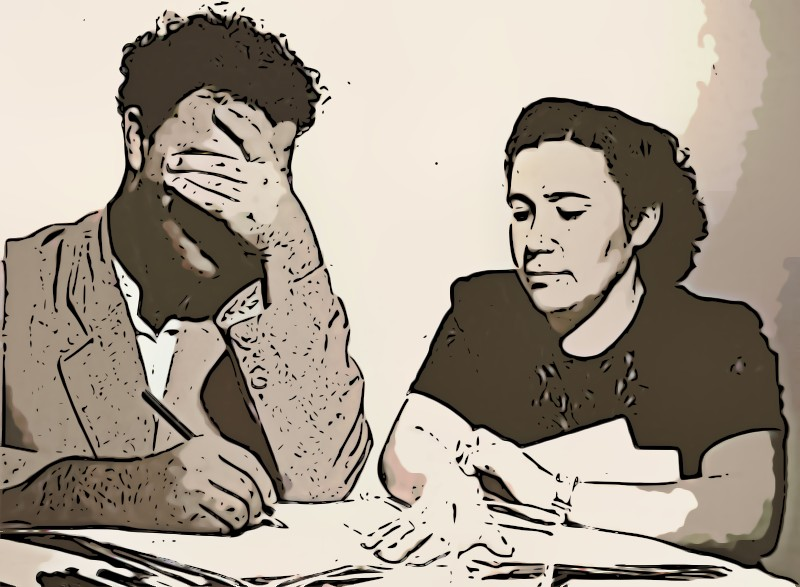Based on the teachings present in “The Mediums’ Book” by Allan Kardec, we have prepared this brief summary of who the mediums are, as well as a brief exploration of the main types of mediumship.

Chico Xavier: one of the greatest mediums of all time. He wrote more than 500 books from various spiritual authors
As an introductory note, we can say that anyone who feels, to any degree, the influence of Spirits is considered, for this reason, a medium. This ability is inherent to human beings and is not, therefore, an exclusive privilege. Therefore, it is rare to find people who do not have at least rudiments of this ability. It can be asserted, therefore, that everyone is a medium to a greater or lesser degree. However, the term “mediums” is commonly used to describe those in whom the mediumistic faculty is well characterized and manifests itself clearly, often depending on a more pronounced sensitivity.
Furthermore, it is important to note that this ability does not manifest in the same way in everyone. Generally, mediums have a special affinity with certain types of phenomena, resulting in a variety of manifestations.
The main categories of mediumship include: physical effects, sensitive, hearing, speaking, seeing, somnambulist, healing, pneumatographic, and writing.
Each of these categories is associated with different types of mediumistic manifestations. We will briefly explore the main types of mediumship:
Physical Effect Mediums
These mediums are particularly adept at producing material phenomena, such as the movement of inert objects, noises, and appearances (materialization of Spirits or objects).
Sensitive Mediums
These are individuals susceptible to sensing the presence of Spirits through a vague impression, a kind of gentle brushing over their entire body, a sensation they cannot explain.
Hearing Mediums
These mediums hear the voices of Spirits. Sometimes it is an inner voice that makes itself heard in their innermost thoughts, while at other times, it is an external voice, clear and distinct, like that of a living person.
Speaking Mediums
In them, the Spirit acts upon the organs of speech. The speaking medium usually expresses themselves without being aware of what they are saying and often says things completely unrelated to their usual ideas, knowledge, and even beyond their intellectual capabilities.
Seeing Mediums
Seeing mediums are endowed with the ability to see Spirits. Some possess this faculty in a normal state when fully awake and retain a precise memory of what they have seen. Others only have it in a state of somnambulism or near-somnambulism.
Somnambulist Mediums
Somnambulism can be considered a variety of mediumistic faculty. The somnambulist acts under the influence of their own spirit; it is their soul that, during moments of emancipation, sees, hears, and perceives beyond the limits of the senses.
Healing Mediums
This type of mediumship mainly consists of the gift some individuals have to heal through simple touch, gaze, or even a gesture, without the use of any medication.
Pneumatographical Mediums
This term is used for a medium with the aptitude to obtain direct writing*, a faculty that is not possible for all writing mediums. This ability has been very rare so far.
*The Spirit communicates in writing without the assistance of the medium’s hands. The text materializes directly on the paper.
Writing Mediums
Of all the means of communication, manual writing is the simplest, most convenient, and, above all, the most complete. When it operates directly on the hand (of the medium), the Spirit gives it an impetus entirely independent of the medium’s will. It moves continuously and without the medium’s control, as long as the Spirit has something to say, and it stops when the Spirit finishes.
Intuitive Mediums
The transmission of thought occurs through the medium’s soul. In this case, the Spirit does not act on the hand to make it write. It acts on the soul, with which it identifies. The soul, under this impulse, guides the hand, and the hand guides the pencil.
Semi-mechanical Mediums
In a purely mechanical medium, hand movement occurs independently of one’s will, while in an intuitive medium, movement is voluntary and optional. The semi-mechanical medium combines elements from both of these genres.
Inspired Mediums
Anyone who, whether in a normal state or in a state of ecstasy, receives communications that are foreign to their preconceived ideas can be included in the category of inspired mediums.
Prescient Mediums
A presentiment is a vague intuition of future events. Some people have this faculty more or less developed, allowing them to glimpse the consequences of current events and the sequence of events.
Did you like our content? Subscribe to our newsletter and follow us on Instagram to stay informed about new content and updates.
Check out some related posts:
👉 Who Was Chico Xavier?
👉 10 Tips of movies and series
👉 What is Spiritism? 8 Curiosities about Spiritism.
👉 Summary on Spiritism (Part I).
👉How did the Spirits communicate with Kardec?
